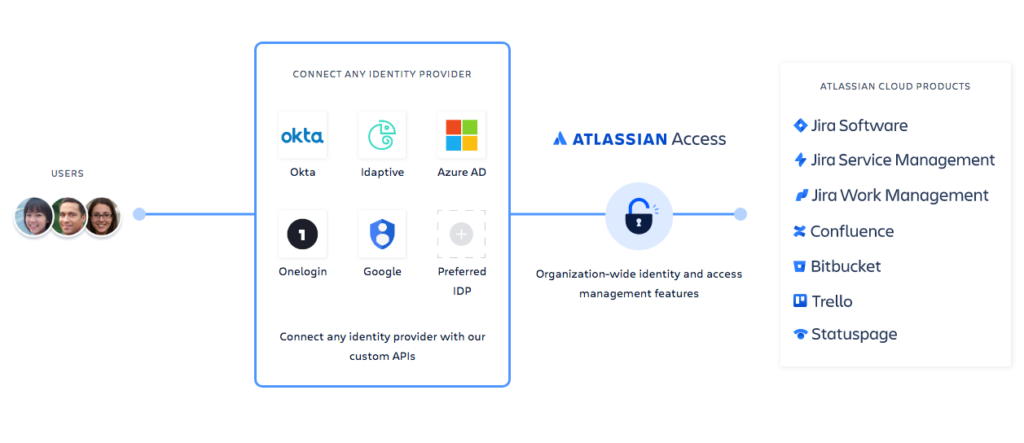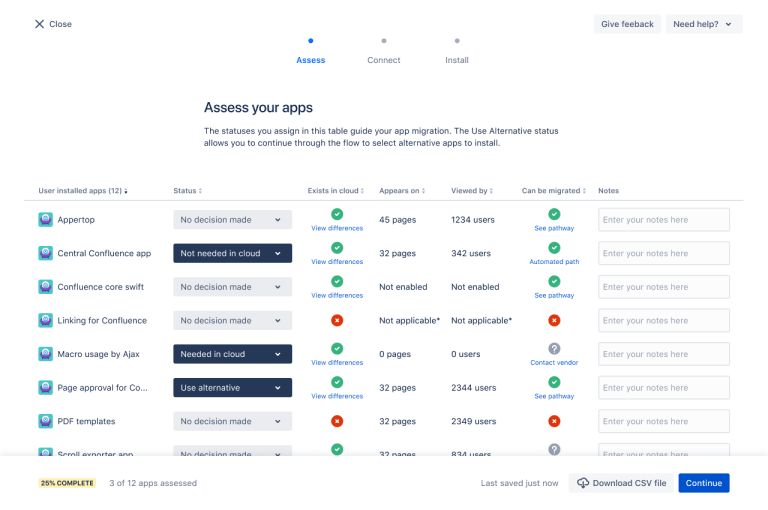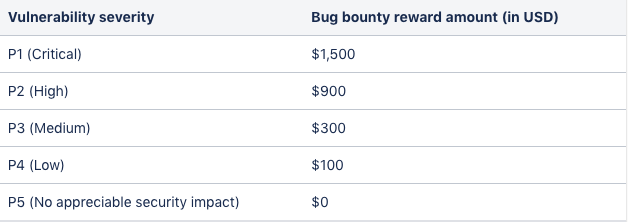Diesen Artikel auf Deutsch lesen.
It's been a long time since the Rolling Stones were telling people "Get Off of My Cloud", and times have certainly changed; nowadays, we move more and more "into the Cloud". But what seems so simple for people privately can cause quite the headache in a professional context. Especially when it comes to sensitive topics such as data protection or information security in general. And so it's not surprising that in many countries, many companies that are considering moving their operations into the Cloud are hesitant at first. Questions about topics like security and performance weigh heavily on the minds of the decision-makers.
These concerns are understandable, as there have been repeated discussions and negative examples in the past. Reason enough for Seibert Media to take a closer look - and to do some "myth-busting"! Because many things you might think you know about the Cloud are not accurate (anymore). And one thing is clear: the future is looking up!
So join us in a journey into the clouds and read in our third article in our "Cloud Mythbusters" series what the current situation is with apps in the Atlassian Cloud (which, by the way, is not limited to the Atlassian Cloud!). The other articles will deal with the following topics:
- What's the Deal with Data Security?
- Put on a performance!
- Ch-ch-ch-ch-changes!
- What Happens to my Data?
- What Does My Admin do When There's Less Admin to Admin?
- Can I still Customize my Cloud Instance?
- How do I Leverage Cloud to Scale for My Enterprise?
In every blog article, we'll get to the bottom of each myth together, and we'll see what's left of them afterwards… And now: enjoy reading and "busting myths"!
Fear of change. We’ve all seen and experienced this in many areas of our lives. Changes in relationships, starting a new job, moving to a new city. As the saying goes, “change is the only constant”.
If the past two years amid a global pandemic have demonstrated anything, it would be the reliance and adaptability of many companies, including your own we’d imagine. Teams and entire organizations have had to adopt or expand remote capabilities as their employees became distributed. As the workforce in general grew to embrace this change, prospective employees often requested or insisted on including either hybrid or full time remote work options.
An example of the continued commitment to empower and support their end user’s need to thrive in this environment is Atlassian Access. Access gives an IT team the tools to safely and efficiently automate user provisioning and deprovisioning. Connecting to an organization’s identity provider, Access provides the automation tools to easily onboard any number of new users throughout the year while protecting from breaches from employees who are no longer authorized. The infrastructure allows users to implement enterprise-wide authentication and oversight across all domains.
This issue of “fear of change” can certainly apply to our scenario here in this blog article; “Will our apps work in the cloud as they have on our servers?”
Cloud supports about 50% more integrations than server, and many integrations supported by both server and cloud have additional benefits in the cloud.
The good news, the light at the end of the tunnel if you will; Cloud is more app-friendly than you think, improvements are always ongoing, and as an Atlassian Solution Partner, we can help with all your concerns about app migration.
Now let’s take a look at some of the common misconceptions, or myths as we like to call them, regarding cloud vs. server apps.
Myth #1: Cloud doesn’t have as many apps
If you’re familiar with any segment of the evolution of music technology, you’ll understand why the move to the cloud is not a unique situation; record albums to tape cassettes to CDs to MP3s to streaming services.
At the outset, maybe you couldn’t find your favorite classic album on tape, or a couple hundred of the MP3s you spent hours ripping from CDs isn’t available on that new streaming service. Given time, however, not only are those tunes you love there, you discover there is much, much more available. Such is the case here.
Years ago this may have been the case regarding apps available in the cloud, however, the reality now is that cloud improvements are moving fast. What was true only a few years ago is definitely not true today. Atlassian Marketplace has over 1,000 apps and integrations for their cloud products and more are being added all the time. Atlassian added more than 250 apps to their arsenal in 2019 and in the first six months of 2020, Atlassian launched another 225.
Whether it's Atlassian’s own server apps or apps from many of the prominent SaaS offerings such as Slack, Github, or Zoom, these are actually already available in the cloud. As more and more apps are developed via these partnerships, staff are added for these dedicated development teams. Functionality increases, the workflow between tools becomes more tightly integrated and seamless, and overall productivity increases.
This is obviously great news for over 200,000 of Atlassian’s customers. But what if your work requires a solution that’s a bit more specific and unique, requires a strict level of compliance, or a unique workflow? Specifics that make the solution require something more than an “off the shelf” application can meet? Atlassian is always working to develop the best-in-class cloud platform for their current and future customers. To that end, they introduced Forge in May
Forge is a next-generation app development platform designed from the ground up to ensure those solutions developed for Atlassian Cloud are future-proofed. Moving beyond the industry standard where iFrames place the majority of the heavy lifting on app developers, Atlassian instead has been working hard to give their developers the tools the easily create apps that are more secure and reliable. Additionally, these apps include the built-in capability to scale up, meeting the new needs their customers will require as time moves on.
Myth #2: I can’t migrate my apps
Confused about which of your current Atlassian apps are available in the cloud?
Atlassian has developed a number of migration tools, such as Jira Cloud Migration Assistant and Confluence Cloud Migration Assistant to help come to the rescue. These tools help simplify both app assessment as well as migration by showing you at a glance which apps your team is using and which of those are available in the cloud.
"We don't have to think about keeping the server up and running, what to do when we need more space, or how we work. We can focus on Homegate because we don't have all the servers and instances on our mind."
- Peter Grube, Software Engineer at Homegate
The feedback received from the app assessment will identify which apps are currently installed on-prem and whether or not those apps exist in the cloud. Details also include links to feature differences and what migration options are currently available. Making use of all this information, app users can begin planning their journey to the cloud.
Many Marketplace partner apps currently already offer manual migration solutions or as part of the early access program, developed automated migration tools. Over forty developers have been building automated migration paths. This includes favorites including the likes of ScriptRunner, Zephyr, and Table Filters and Charts.
To learn more about this process, you can find additional information here - “We’re making it easier to migrate your Marketplace apps”.
Myth #3: Cloud app functionality is limited compared to on-prem
1,000+. That’s how many cloud apps are now part of the Atlassian Partner ecosphere. As a result, this myth has easily been debunked.
Is there, in every instance, an exact features match between those apps previously on-prem that are now available in the cloud? No. At least not yet. Are apps in the cloud sometimes different than the ones use on-prem? Yes, but different doesn’t mean less.
In some instances, users will be able to replicate their current workflows with existing cloud apps. In other cases, there may need to be some modifications of existing workflows, or possibly adopting a different workflow altogether. Finally, in other instances, the core functionality in Atlassian tools might be everything one needs to get workflows done, or the app functionality in the cloud is better and more robust.
In a similar fashion, we’re certain the quality of your music streaming service is sounding better all the time compared to your albums, and it’s a bit easier to listen to your favorite tunes on the metro this way.
Myth #4: Cloud apps aren’t secure
I feel like we’ve heard this tune before. Oh yes, blog article #1.
As mentioned in that previous article, concerns revolving around security are companies’ biggest concerns when it comes to cloud migration. As it turns out, however, 94% of businesses indicate that the move to the cloud has made them more, not less, secure.
You might ask yourself, “how does Atlassian keep our data secure?”
Glad you asked;
- Enforced minimum security requirements
- Establishes foundational security requirements for the process of accessing a company’s network
- Best-in-class “Bug Bounty” program
- A powerful tool, which when implemented post-production, helps to detect vulnerabilities in applications and services.
- Collaborative security self-assessment program
- A collaboration between Atlassian and Marketplace Partners to increase security awareness and improve security practices
- Clear privacy policies
- Addresses the information collected about users when using Atlassian’s products or services, or otherwise any interactions with Atlassian.
- GDPR compliant practices
- Detailed information regarding Atlassian’s approach and investment in GDPR compliance in service of our customers and individual data subjects.
- Constant improvements to security infrastructure and practices
- Downloads Atlassian whitepaper, “Security @ Atlassian: An in-depth view of Atlassian’s approach to Security”
Additionally, Atlassian always strips personal information from the API. This ensures user data never passes to app vendors, keeping it both safe and GDPR compliant.
And finally, part of their most recent improvements was the introduction of a new cloud security badge in the Atlassian Marketplace. The purpose is to help customers quickly and easily identify those cloud apps that participate in the Marketplace Bug Bounty Program, a collaboration between Atlassian and Marketplace Partners. Bug Bounty is hosted on the SaaS platform Bugcrowd, a crowdsourcing platform consisting of security researchers from around the globe, allowing for the discovery and documentation of app vulnerabilities.
When a developer joins the program, their application begins as a private program and then Bugcrowd extends the invitation to this talented group of security professionals to join. Doing so, they are given parameters about what they can and cannot test - their scope of work if you will. When one of these research professionals identifies what they believe to be a bug in the application, it is reported via Bugcrowd.
The bug is then reviewed and verified by the Application Security Engineering (ASE) team. If the developer concurs with the assessment, agreeing the bug indeed requires a fix, the security researcher(s) who identified the vulnerability is awarded a reward by the developer. In addition to rewarding the researcher for their diligence, it also automatically generates a work ticket for the development team to fix the vulnerability and improve security.
A commitment like Marketplace Bug Bounty Program increases the level of trust between partners and customers. Third-party reports can be generated indicating results of penetration testing. The badge earned identifies those vendors who have put in place ongoing vulnerability testing from a global pool of ethical security researchers.
“Atlassian highlights those developers who participate in the paid bug bounty programs on the Atlassian Marketplace. We want to signal to our customers the apps that reward researchers for reporting vulnerabilities and promote security-conscious apps in the Marketplace.”
Atlassian’s Bug Crowd domain offers “tools for teams, from startup to enterprise. Atlassian provides the tools to help every team unleash their full potential.”
As always, if you would like to try Atlassian Cloud or have any questions, please feel free to reach out to us at Seibert Media.






